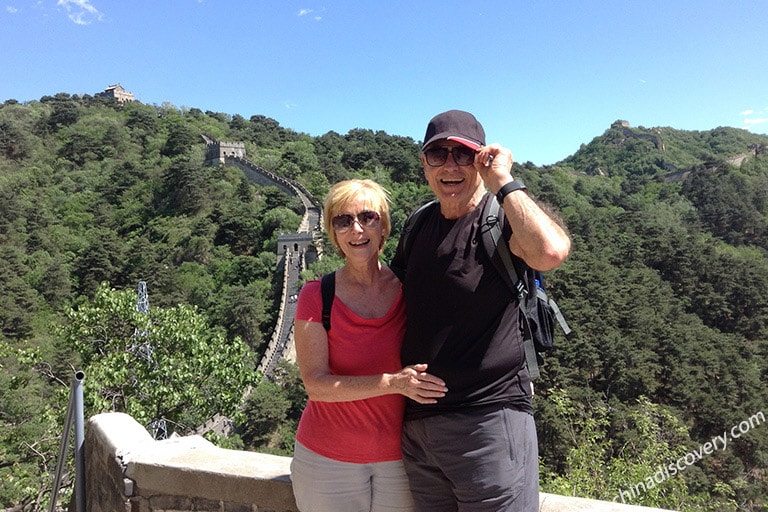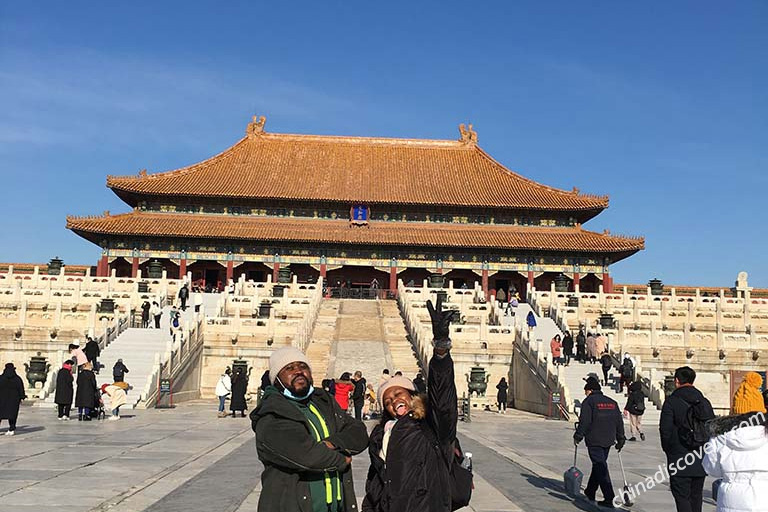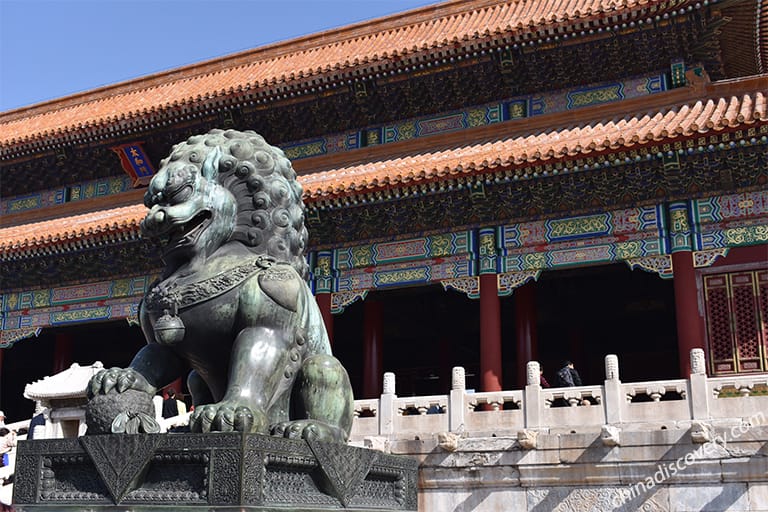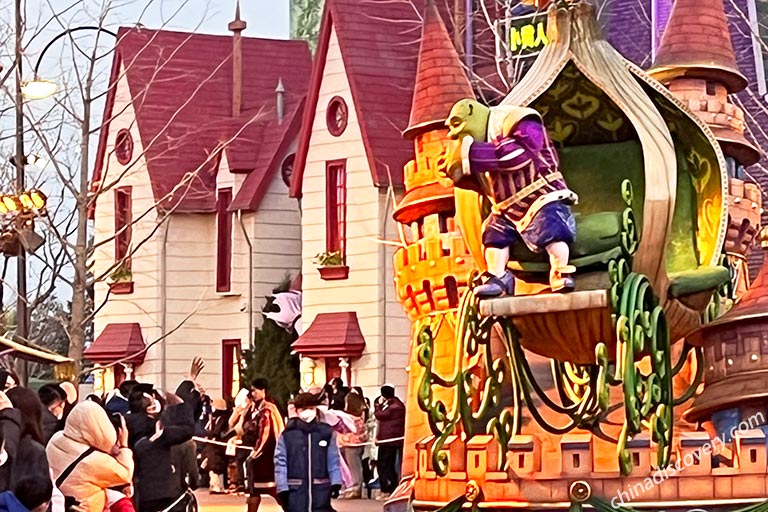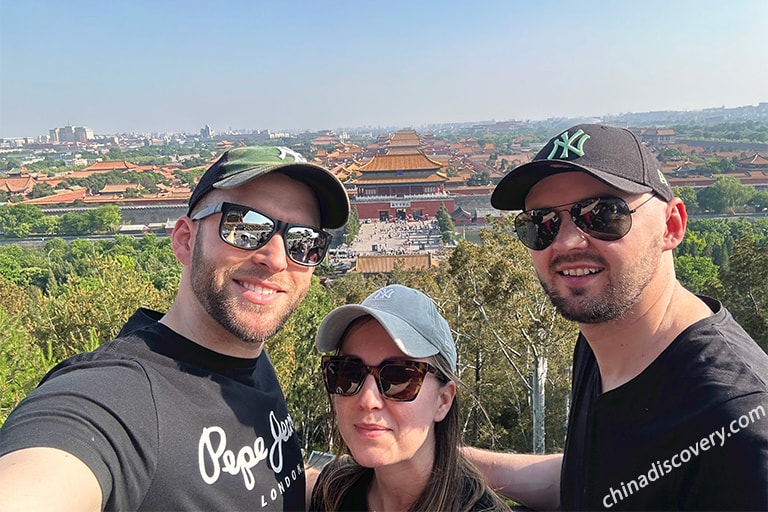What to Do in Beijing - Recommended Must Do & Best Beijing Experiences 2025/2026
As the premier tourist destination of China, Beijing gets a lot of titles – old imperial city, present capital city, home to China's most world cultural heritages, political and cultural center of China, etc. Traveling Beijing in several days or several weeks, you won't feel bored because there are a lot of things to do. Wondering what to do in Beijing in you limited travel time? Check the following top experiences recommended by Lonely Planet and get inspiration for your next Beijing tours.
Forbidden City, enjoying the highest level of Chinese imperial architecture, had served as the home of 24 emperors and political center of the imperial government for Ming and Qing Dynasty (1638 ~ 1912). As an UNSCO-listed heritage, it perfectly exemplifies Chinese traditional palatial architecture. With a huge complex of over 900 surviving rooms, it offers an interesting view of the traditional imperial buildings, like atmospheric halls, pavilions, gardens and courtyard. Taking a 3 hours' walking in the buildings ringed by the citadel red walls, you can take a glimpse of the layout of the rooms where the royal families once lived, or imagine how the vicissitudes of the dynasties took place in this palace. ☛ Forbidden City Facts
Forbidden City is known as Palace Museum. Visiting this museum allows you to see more than a million rare valuable exhibiting treasures. Most of the collected treasures collected in Palace Museum are based on ancient dynasties, especially Qing Dynasty, including ceramics, paintings, jade, sculpture, bronze ware, timepiece, palace artifact, etc. Reading the explanation of each collection or listening to an experienced guide, you can learn many attractive stories happened in old times.
Apart from its cultural significance, Forbidden City also attracts travelers with its seasonal natural beauty and entertaining activities. In spring, different assortments of flowers bloom in each corner of Forbidden City, such as cherry blossom (April), Magnolia (early April), Peach Blossom (mid and late April) and so on. Forbidden City usually offers a rare nighttime glimpse of China's imperial past in the spring festival, when the whole palace is illuminated with lanterns and you may see some actors dressed up in old costumes.
Related Links: Forbidden City (Palace Museum) 2025 Guide and News
☛ Forbidden City Tours | Beijing Tours including Forbidden City

Various Faces of Forbidden City

Great Wall with Amazing Landcape
It will be a shame if you travel to Beijing without a climb to the Great Wall of China which is an ancient series of defensive architecture defending China for hundreds of years. Scattered in the wild land of northern and central China, Great Wall stretches over 20,000 kilometers. It can be traced back to over 2,500 years ago. Nowadays, the Great Wall of Ming Dynasty in and around Beijing is the best preserved and the most popular. Traveling to Great Wall, you can not only admire the architectural wonder in China's long history and get an awe-inspiring scene involving the wriggling wall, soaring towers, precipitous peaks and dense forests.
There several sections of Great Wall around Beijing City, including Mutianyu, Badaling, Juyongguan, Huanghuacheng, Simatai, Jinshanling, Gubeikou and Jiankou. Different sections of the walls offer quite different experiences to visitors. Usually, Mutianyu Great Wall is the most popular one among foreign travelers because of its well-maintained wall and towers, captivating landscape, closer distance to Beijing and less crowded environment. Equipped with cable way and slide way, both Mutianyu Great Wall and Badaling Great Wall are kids-friendly. If you are a shutterbug, Jinshanling Great Wall - the most photogenic section is recommended. The architectural art, cloud sea, sunset and sunrise are the permanent theme for photographer. For hiking enthusiasts, you really get a lot of choices, like Simatai Great Wall with fascinating night views, wildest and steepest Jiankou Great Wall, unrestored Gubeikou Great Wall, unique lakeside Huanghuacheng Great Wall, etc.
Related Links: Great Wall Tourism | Great Wall of China Travel Information 2025/2026
☛ Great Wall of China Tours | Best 4 Great Wall Tours from Beijing
Traveling to the old royal city, you can't miss the best-preserved royal garden – Summer Palace. Summer Palace once was the private garden for emperors and their families to retreat during hot summer days but now it becomes a big park for the public. As a masterpiece of Chinese landscape garden design, it is a UNESCO World Cultural Heritage as well. Summer Palace was constructed according to the Chinese philosophy of balancing the works of man with nature, so you are able to appreciate the natural beauty in this artificial garden. Using Kunming Lake and Longevity Hill as the basic framework, the garden presents a small landscape world. Walking in the garden, you can appreciate a balanced ensemble of superlative artistic value formed by the featured architectures like halls, pavilions, bridges, temples, corridors, etc. 17-Arch Bridge is the largest and longest bridge with 17 different types of arches. Incorporating features of Precious Belt Bridge in Suzhou and Lugou Bridge in Beijing, it is photographs' ideal subject, especially when the sun goes down.
Visiting Summer Palace in different seasons permits you to enjoy quite different scenery, like flowers in spring, lotus pond in summer, colorful leaves in autumn and snowscape in winter. There are many boats on Kunming Lake for rent and it is interesting to ride a boat if you travel with your family. ☛ Summer Palace Boat Ride Guide
In addition to Summer Palace, there some other imperial gardens where you can have a relaxed time, like Beihai Park, Yuanmingyuan Park, Garden of Everasting Spring, etc.
Related Links: Summer Palace, Beijing - 2025 Ultimate Guide

Best Royal Gareden - Summer Palace

Beijing Hutongs and Quadrangle Dwellings
Connecting the quadrangle dwellings (Siheyuan), Hutong is always the regarded the timeless pulse of old Beijing's daily life. Till now, Beijing people still have special emotion for hutongs. There are more than 6,000 narrow alleyways linking whole Beijing from ancient time and witness the historical and cultural evolution of the this aged capital city. One unimpressive hutong might be gathered with the former residences of imperial officials and noble lords. One ordinary courtyard might be the place where the most famous theatrical troupe's practices their opera. Strolling along the twisting hutongs and see how people lived in these quadrangle courtyards, you can suppose the old life of Beijingers.
Want to seek for the Beijing's pulse? There are numerous hutongs for your choice. But if you want experience something more memorable, you can visit Nanluoguxiang, Yandaixie Street and Guozijian Streets.
As the most complete hutong complex in Beijing, Nanluoguxiang is rather popular among travelers. It enjoys a history of over 740 years and many old quadrangle courtyards are preserved there. Nanluoguxiang resembles a fish bone with a 787-meter main street and 8 smaller Hutongs on both sides.
Yandaixie Street (Tobacco Pouch Street) is the oldest commercial street and traditional Hutong in Beijing. Stretching to 232 meters, it is lined with various shops, cafes, bars, and restaurants where you can see many interesting handcrafts and buy some souvenirs.
Guozijian Street formerly called Chengxian Street can date back to 1306. It is the gathering place of many historical sites, including Lama Temple which is the highest-standard Tibetan Buddhist temple, Guozijian – the imperial college with well-restored buildings and Temple of Confucius where people worship Confucius.
China Discovery offers various featured activities in Beijing Hutongs, like visiting a local family, making facial makeup of Peking Opera and learning paper cutting, Chinese calligraphy. If you have interest, feel free to contact us.
Related Links: Top 10 Most Recommended Beijing Hutongs to Visit
Beijing is a tangle of contradictions. The yellow roofs of the long-established imperial architectures have watched the city for centuries serenely and the contemporary skyscrapers boom at the speed of light. When the cloulds and msit clear away, you can overview the different facets of Beijing city from the “summits” of Beijing.
Jingshan Hill in Jingshan Park once was the highest point of Beijing old imperil city. Climbing to Wanchun Pavilion of Jingshan Hill delivers you a perfect view of Beijing Central Axis and Forbidden City on its south side clearly. You will get its traditional layout and vast architectures from above in your eyes. It is also available to get a panoramic view of Bell Tower and Drum Tower on north and Beihai Park on west.
Most of Beijing's supertall skyscrapers are located in CBD (Beijing Central Business District). Climbing to the tallest one – China World Trade Center TowerⅢ if you don't have a acrophobia, the surrounding high-rises and the people and vehicles on the street become models in pocket-size.
After 2008 Beijing Olympic Games, Bird's Nest became world-famous. The unique shape of bird's nest represents the cradle carrying the hope of human future. Walking on the 60-meter high top of Bird's Nest, you will have a bird's-eye view of Olympic Park and the representative works like water cube, Beijing National Indoor Stadium, Olympic Forest Park, etc.
With an altitude of 2303 meters (7,556 feet), Lingshan Mountain is the authentic summit of Beijing. It is one of the best summer resorts for local people because of its high altitude and dense forests. Standing on the top of the mountain, you can see peaks rising one after another.
Related Links: 10 Awesome Landmark Sites in Beijing to Take Photos

Different Summits of Beijing

Precious Treasures Collected in National Museum and Palace Museum
With approximately 200 museums, Beijing is a historical city with the second most museums. The different themed museums with billions of collections make travelers can't move their steps. Integrating archaeology and cutting-edge technology, they provide insights into traditional and contemporary Chinese history and culture. In addition to Palace Museum (Forbidden City), there are lots of other informative museums worthy of your visit.
National Museum of China is collected with over 1 million valuable rare artifacts dating from prehistoric China through to the late Qing dynasty. Visiting National Museum of China, treasure hunters must be shocked by a series of outstanding exhibitions about ancient China. The most precious collections include 3000-year-old Owl-shaped Bronze Wine Holder, 2000-year-old Jade burial, 1500-year-old life-sized bronze acupuncture statue, etc.
The Antiquarium of the Palace Museum is a theme museum for anyone with an interest in antiques. There are seemingly-endless stunning displays of the treasures that successive emperors owned. The Gallery of Clocks consists of many ornate clocks given as presents from other countries in Qing Dynasty. The Treasure Gallery vividly reflects the luxury and artistic taste of ancient Chinese royalty. Nine-dragon Screen is a must see in this museum. ☛ What Treasures Are Collected in the Palace Museum (Forbidden City)
Comparing to other national level museums in Beijing, Beijing Capital Museum is more like a city-specialized museum focusing on daily life inside Beijing. Here you can enjoy many local traditional decorations and activities. It even displays a few authentic buildings that are typical in the past rather than simply posting pictures on bare walls.
Are you a warbird enthusiast? If you are, don't miss China Aviation Museum. There are more aircraft than you can imagine and more types than you ever knew existed. It features in extensive collection of aircraft, from Korean War era MIG-15 jet fighters to Chairman Mao's private plane, as well as different types of helicopters, nuclear-capable bombers and other equipment.
Moreover, you can visit National Art Museum, Great Wall Museum, China Railway Museum, China National Film Museum, etc.
Related Links: Top 10 Unmissable Best Museums in Beijing
Located in north side of Forbidden City, Shichahai, a fabulous hutong area, once was the backyard of members of the imperial house. Some travelers prefer a stay here because it is undoubtedly one of the best areas of Beijing, oldest, central, historical, most scenic, cultural, best preserved and beautiful. Its scenic area contains three lakes (Qianhai Lake, Houhai Lake and Xihai Lake) which make it one of the most alluring sites. The banks of the lakes are lined by thousands of willow trees present the mesmerizing effect on visitors during spring and summer. It is rather relaxing to rent a boat and paddle on the lakes. When the lakes are frozen in the winter, it is available skate or ride a skating car. Apart from the scenic charm, it is also an area to explore old Beijing. There was a street of different kinds of restaurants, bars, and stores of Beijing culture souvenirs. It is a very meaningful thing to send postcards to your families or friends in a post store.
When the night comes, the atmosphere of Shichahai becomes lively. The restless electro music and drumbeat interweaving together throw this area in full enthusiasm. Thousands of foreign and local visitors always hang around the Silver Ingot Bridge which links Houhai Lake and Qianhai Lake
Related Links: Beijing Nightlife - 13 Things to Do in Beijing at Night

Day and Night Scenery of Shichahai
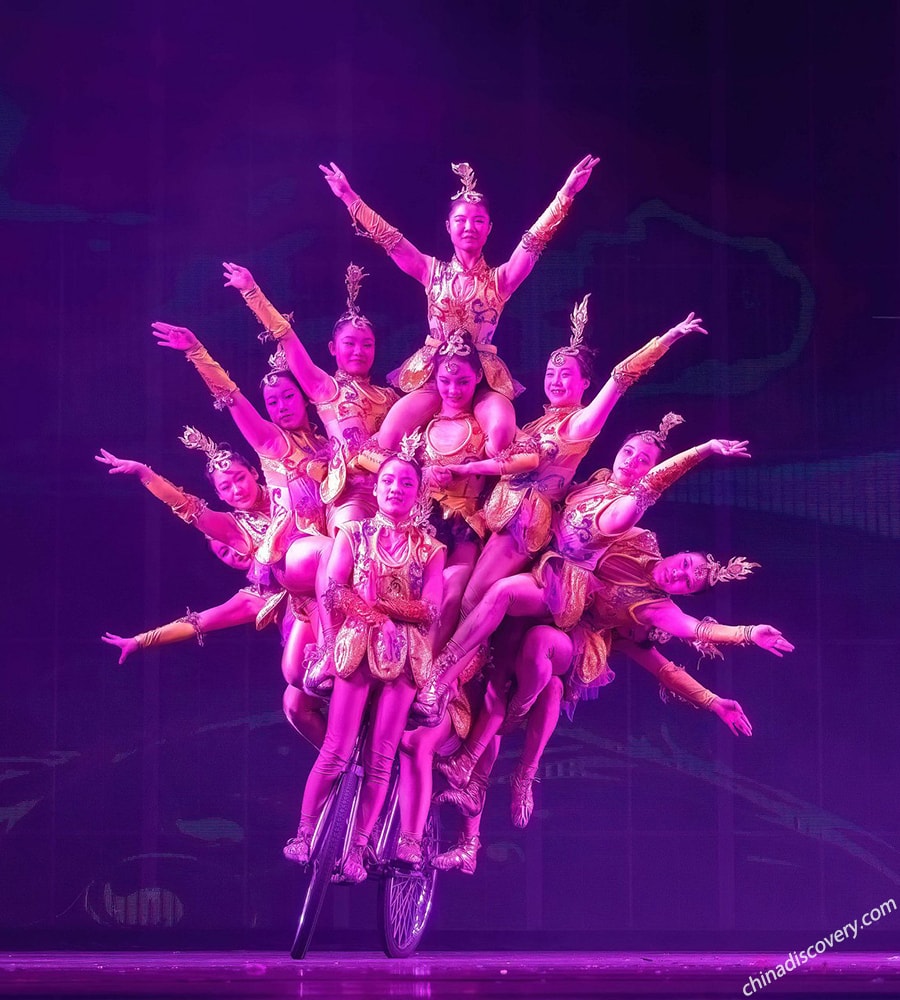
Fantastic Acrobatic Show
Don't forget to savor an audio-visual feast in Beijing. Peking Opera, honored as national opera, is the quintessence of China Culture. Incorporating music, vocal performance, mime, dance and acrobatics together, it is was popular entertainment in old days and still has a following today. It tells stories of history, politics, society and daily life and aspires to inform as they entertain. You may not understand what they actors sing, but you may be moved by their expressions. Liyuan Theater is a recommended place for watching the authentic Peking Opera. Xiangsheng (相声), also known as comic dialogue or crosstalk, is also a traditional Chinese comedic performing art prevailing in Beijing. It involves two performers who banter back and forth with skills of speaking, teasing, imitating and sing. The language of funny Xiangsheng is delivered in a rapid and humorous style, typically in Beijing dialect.
For non-Chinese speaking, it may a little difficult to listen to the opera or Xiangsheng. Many travelers prefer some more interesting shows, like acrobatic show, which are recommended as a wonderful evening entertainment for all ages, especially liked by kids. You can turn to Chaoyang Theater for acrobatic show.
Related Links: 5 Best Places to Explore Beijing's Folk Culture
Don't leave Beijing without trying the iconic Beijing Dishes. As a capital city more than 800 years, Beijing developed its own unique cuisines and snacks. If you are a gastronome, just immerse yourself in the heaven of food of Beijing. Either Court Cuisine or folk snacks are easy to be found in Beijing's restaurants and food streets. Of course Peking Roast Duck is the first dish you need to try in Beijing. It is famously described as fat but not greasy, crisp outside and juicy inside. Making a duck roll with pancakes is the authentic Chinese way to enjoy Peking Duck. Instant-boiled Mutton (Mongolian Hot Pot) is a traditional Beijing halal dish enjoying a history of nearly 800 years. It is a great enjoyment to have Instant-boiled Mutton in cold winter. Are you wondering what the emperors ate? You can taste Chinese Imperial Cuisine once for royal families. It is made of many expensive food stuffs, like bear's paws, birds' nests, venison, sea cucumbers, duck webs… Furthermore, there are many popular delectable folk dishes, including dumplings, noodles, Dalianhuoshao, Fried Chinese Doughnut, Luzhuhuoshao and Chaoganer and so on.
More than surprising cuisines snacks of its own, Beijing also showcases the best of China's flavors. No matter you are interested in spicy Sichuan food or sweet Hangzhou cuisine, it's convenient to find some restaurants to amuse your appetite.
Related Links: Beijing Cuisines & Snacks | Beijing Restaurants | Where to Eat Beijing Roast Duck
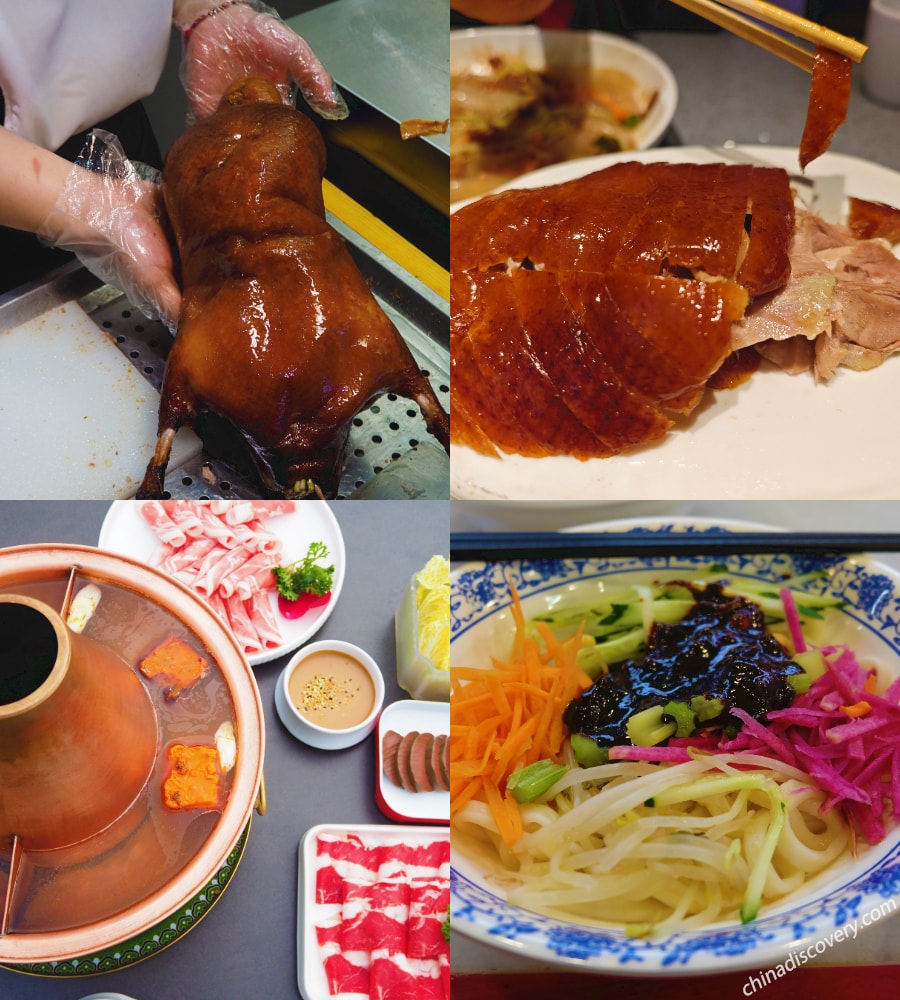
Delicious Beijing Food
Beijing is surrounded by mountains in its three sides and the mountains in west are collectively called West Mountain or Xishan Mountain. Because Xishan Mountain is rich in coal, many businessmen from Beijing City ride a horse here for coal in old times. The path they walked is Jingxi (Beijing-Xishan) Ancient Path. Jingxi Ancient Path then plays a vital and strategic role in traffic. Though it doesn't appear to be in good condition, it still boasts the most historical sites. Reaching to 12 kilometer in length, it is now a peaceful hiking route. Many hikers who want to get away from the hustle and bustle of this busy city have a delightful time to walk on the horses' footprints on Jingxi Ancient Path.
The whole path is divided into three parts, including Xishan Path, Yuhe Path and Xintan Path. Trekking along the old path, your eyes will be overwhelmed by tree-capped peaks, clear springs, wild plants and various kinds of insects, etc. Moreover, it leads you to the history of the prosperous period.
Related Links: Beijing Walking Experiences - Places to Go For A Walking in Beijing
Start planning your tailor-made holiday to China by contacting one of our specialists. Once inquired, you’ll get a response within 0.5~23.5 hours.
Customize a TripHave a question? Get answers from our travel experts or guests
- Your Question:
- Your Name:
- Your Email:
- Submit
- Affordable and valuable price
- 100% tailor-made packages
- Highly rated customers reviews
- Efficient customer support


























